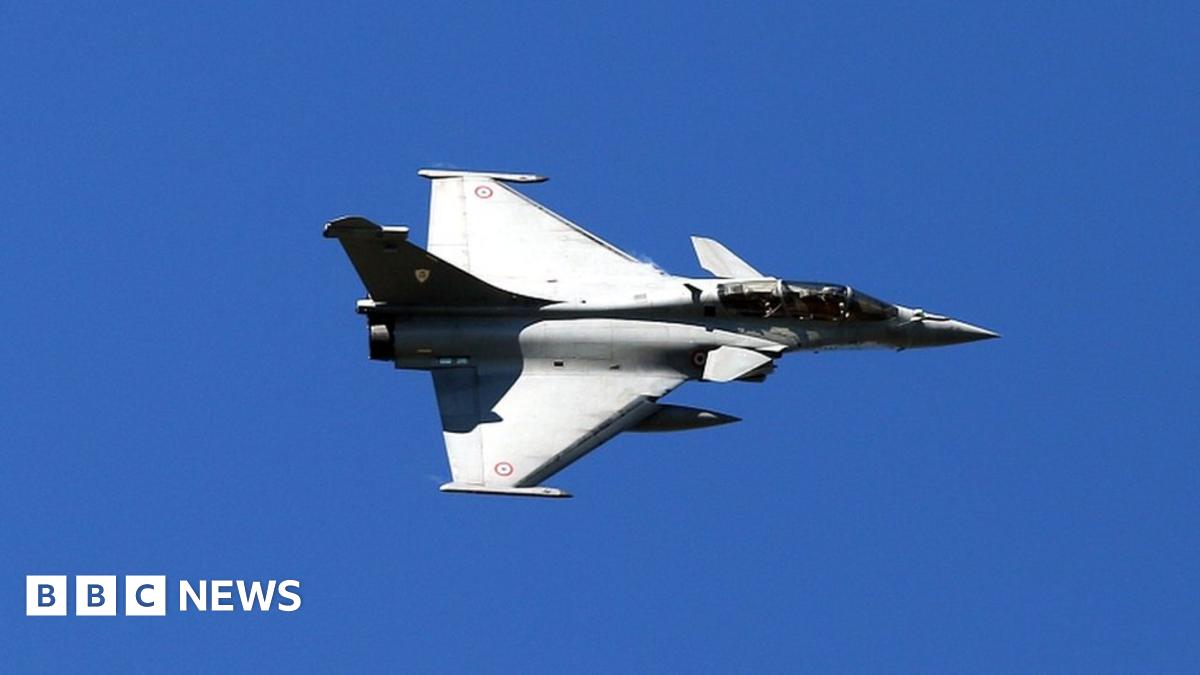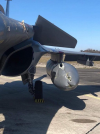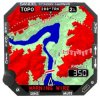You would guess he was in a hard left bank at the time.
Many years ago (1978) I was in the Royal Air Force in Germany, serving in a Bloodhound MK2 Guided Missile Squadron as Radar Shift Chief.
One (up until then) quiet Sunday afernoon, I was stood on the Radar Plinth (about 50 feet up in the air) which was located about a hundred or so yards from the beginning of the runway, taking a break, admiring the beautiful North German Countryside and thinking how an average boy from a farming town in Yorkshire, England ended up doing this fantastic and exciting work.
At the far end of the runway, maintenance crews had raised the emergency aircraft capture net for routine maintenance, something that always took place on a Sunday as it seemed the Ruskies (Soviet Russians) didn't tend to invade our airspace on Sundays, so we didn't send fighters up to escort them out. The purpose of this net was to stop jets whose brake shutes failed, from careering over the boundary, across a narrow wooded area and civilian road, and into the German village of Wildenwrath that bordered the airbase. These nets stood at a maximum of about12 to 15 feet high. Just enough to cover the tail of a jet, and stretched the full width of a runway also designed to land civilian passenger aircraft. It was very rarely deployed but its existence was a safety requirement.
Anyway, this Sunday turned out very differently. Whilst I was watching, one of our Phantom Jets returned from an Intercept. The pilot was leaving the base the next day to go on to his next posting in the UK. As a sort of "goodbye Wildenwrath, thanks for all the beer and Bratwurst", instead of landing, he decided to do an extremely fast, extremely low-level pass over the runway, then climb steeply, bank left, circle round, and land. Unfortunately for him,it didn't quite work out that way.
At first, I watched in pure admiration at his incredible flying skills as he shot down the runway at a height of what must have been less than 10 feet off the ground, then in gobsmacked horror, as he careered further down the runway, then slammed on the afterburners and pulled near verticle when he saw the raised barriers dead in front of him. No use.
At what must have been 500 Miles per hour, he slammed into the nets, completely ripping out the nets, arrest mechanism, and a good part of the runway. What happened next is burnt into my memory. With the nets and attachments trailing wildly behind him and burning furiously in the afterburner jets, he climbed on his tail to a couple of thousand feet, leveled out, and circled around anticlockwise, nets, machinery, etc still burning and dropping off. Then he did a slow, low-level, safety inspection pass over the same runway so that Air Traffic could assess the damage and check the successful deployment of his undercarriage. My Air Traffic mate who was on shift that day shot off a green emergency signal flare to signal to him that his landing gear was down and it was safe to land, which he did without any further incident. Again, a great testament to his flying skills, presence of mind, and also the tough build of the now long since retired Phantom aircraft design. However, the story is not over.
By the time his jet came to a stop at the (now former) crash netting end of the runway, a military police Land Rover with suitably uniformed policemen was waiting to pick him up. He was taken directly to the station commander's residence and given a choice. Fly home the next day as a civilian, or under arrest and be taken to the British Military Prison at R.A.F Debden to await courts Martial. I always wondered what he did in "Civvy" life.
The runway was closed for only about a day, but with amazing efficiency, was up and running again within 24 hours. The aircraft that flew him into early retirement took off from it. What bittersweet memories he must have had as the aircraft took off and flew him over the now-replaced barriers!
As for me, I could have lived on free beer for weeks off my eye witness recount, but there was the unspoken rule of "don't talk". Fair enough. This is the first time I have written or even really spoken outside the family about it, but 43 years have gone by and the station was decommissioned 30 years ago so I reckon the security risks have all but gone.














